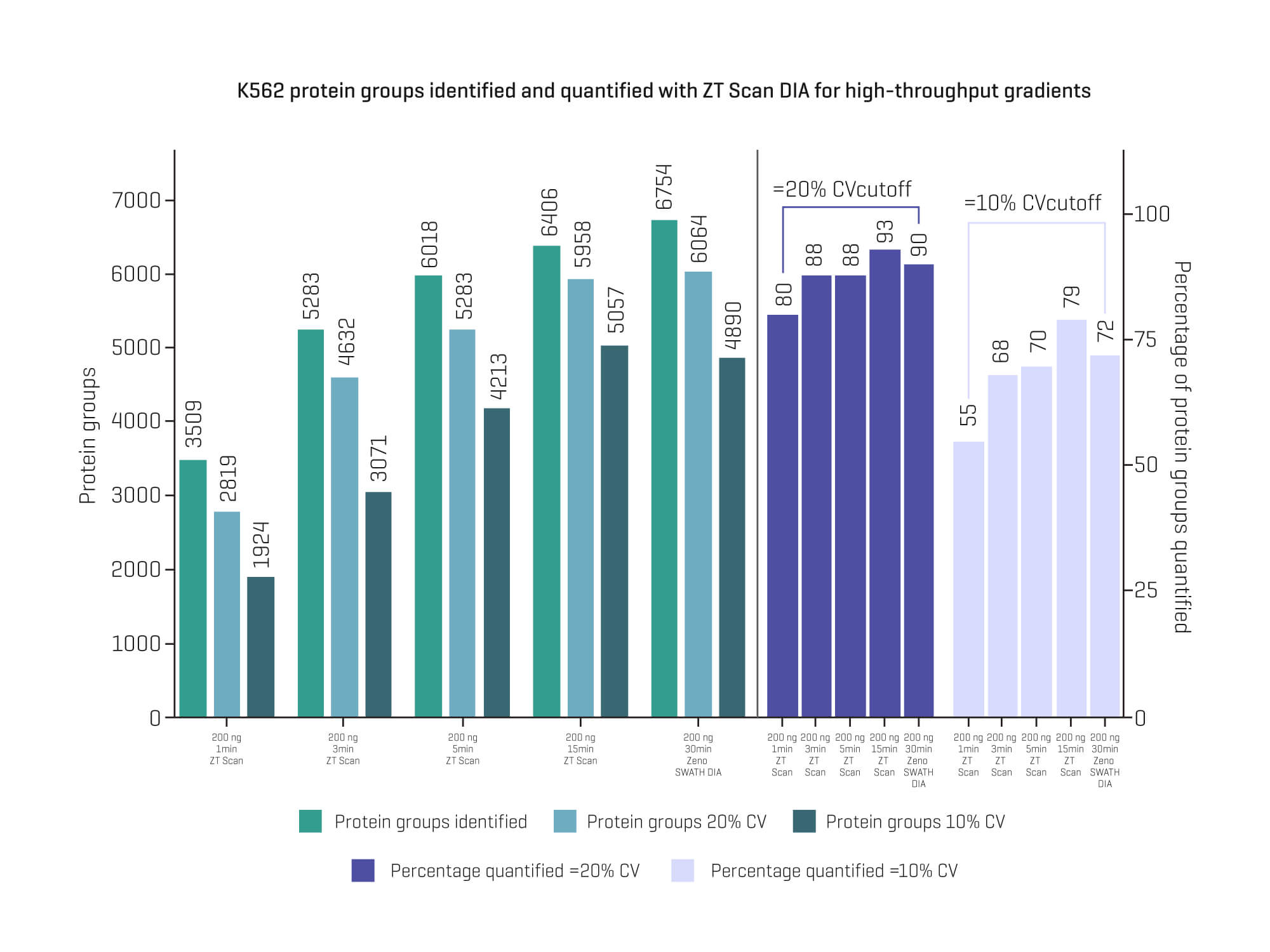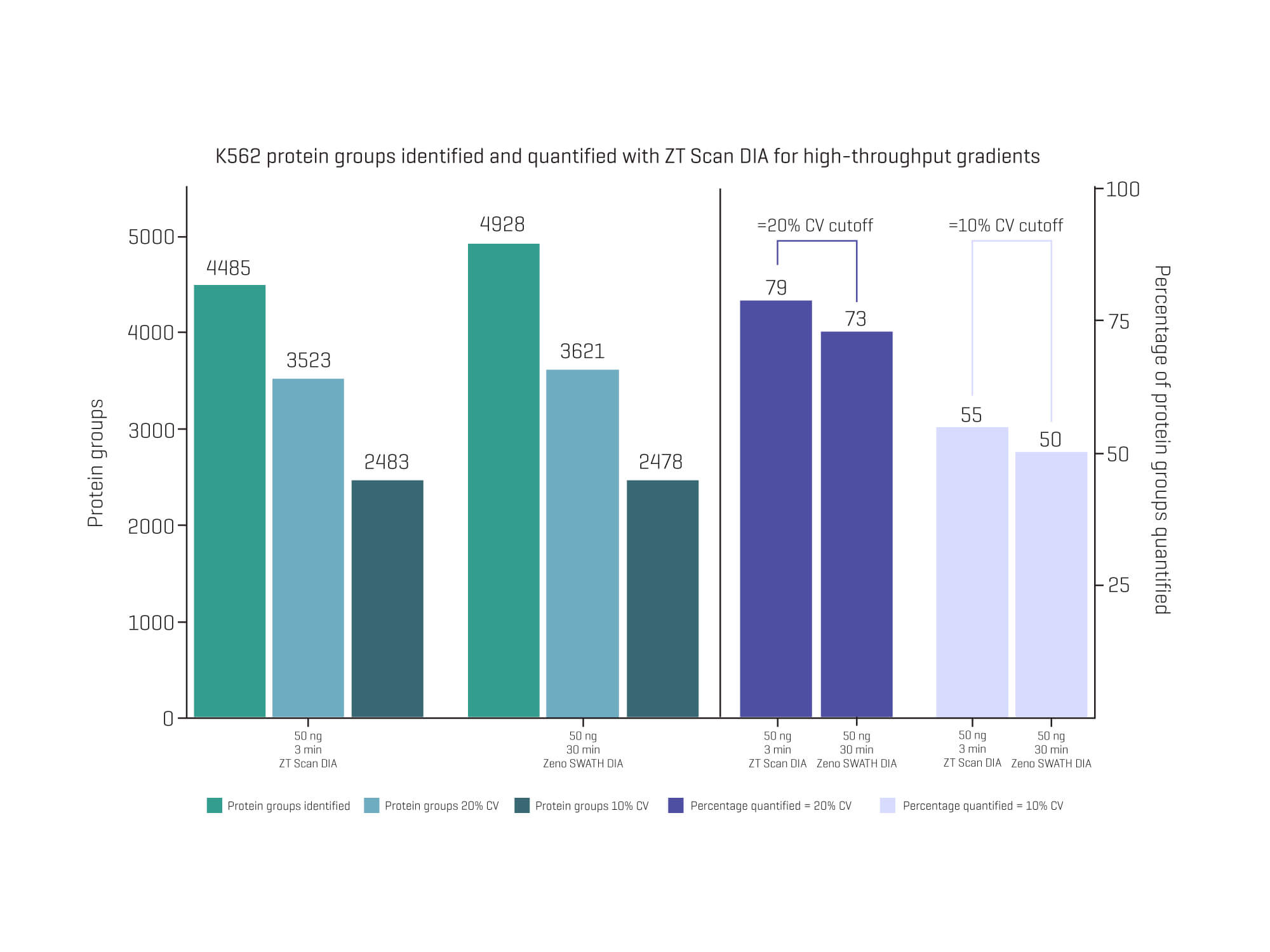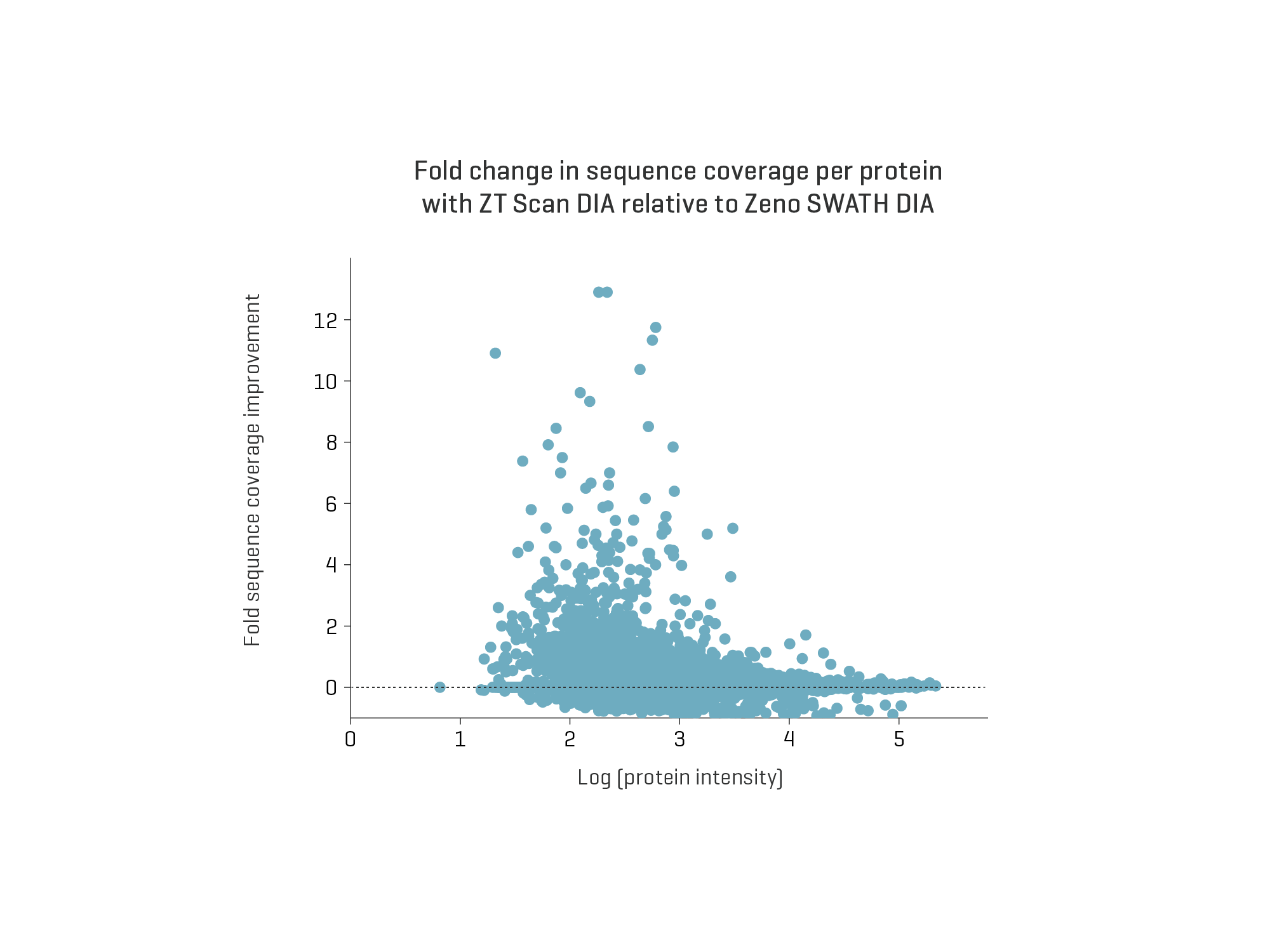The SCIEX ZenoTOF 7600+ system is a Zeno trap-enabled QTOF engineered with the added specificity of the scanning quadrupole dimension to enhance speed, depth and certainty in quantitative measurements.
Features
Identify and quantify significantly more analytes in a shorter time, with less sample and higher precision.
ZT Scan DIA
The powerful combination of DIA, Zeno trap and added specificity of the scanning quadrupole dimension enhances depth and certainty in quantitative measurements.
Overcome QTOF MS/MS duty cycle deficiencies
Ions are accumulated in the Zeno trap before being pulsed rapidly into the TOF, meaning we can detect up to 20x more ions.
Scan speeds of up to 640 Hz
The fastest SCIEX QTOF yet! When using ZT Scan DIA, the isolation window for MS/MS slides along the m/z range of interest during each cycle. Based on a defined m/z range, scanning at 750 Da/s with a sliding isolation window of 5 Da would equate to a scan rate of 640 Hz.
Ionization Source
The Optiflow Turbo V ion source incorporates the reliability and efficiency of the Turbo V ion source while providing flexibility for quickly switching flow rates, including nanoflow regimes for the highest sensitivity.
Tunable electron fragmentation of all molecule types
Exclusive to SCIEX, the ability to tune electron kinetic energy to employ electron activated dissociation (EAD) extends the utility of the approach to all molecule types.
Simplified workflows
ZT Scan DIA methods are easy to set up with minimal user optimization needed, making the ZenoTOF 7600+ system ideally suited to the analysis of large sample cohorts.
Deliver on important timelines
With up to 10-fold improvement in throughput for protein quantitation, the ZenoTOF 7600+ enables 1-minute gradient analyses using ZT Scan DIA for low to moderate protein loads.
Detection
Performance gains with fast LC gradients, using the ZenoTOF 7600+ system, increase as sample loading and complexity increase when using ZT Scan DIA with added specificity of the scanning quadrupole dimension.
Get more information
Target, validate and translate with ZT Scan DIA
Whether confirming a biomarker as the right target or validating a new translational biomarker for drug discovery, determining the pathway for biotherapeutic efficacy demands timely and precise decisions.

Biology beyond protein ID
For quantitative proteomics, ZT Scan DIA bridges the gap between protein identification and translation, enabling you to make informed decisions based on quantitation at unparalleled speed, accuracy and precision.
With the added dimension of data from quadrupole scanning, ZT Scan DIA brings certainty to your research, enabling precise decisions on which protein biomarker to validate and which therapeutic pathway to choose.

Biological relevance at speed
Translational certainty requires a depth of proteome coverage that can be accurately validated at scale.
ZT Scan DIA data allows you to precisely quantify proteins with no compromise in depth or coverage. With up to 10-fold improvement in throughput for protein quantitation, ZT Scan DIA enables 1-minute analyses for low to moderate protein loads.

Biological nuances unlocked
In biomarker discovery and development, low protein load analysis exposes measurement vulnerabilities, increasing the need for precision and reducing margins of error.
With ZT Scan DIA, navigate these risks with up to 9 fold increase in protein coverage at low loads. This enhanced protein coverage will help you negate those frailties with increased certainty to make precise decisions.